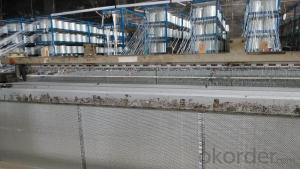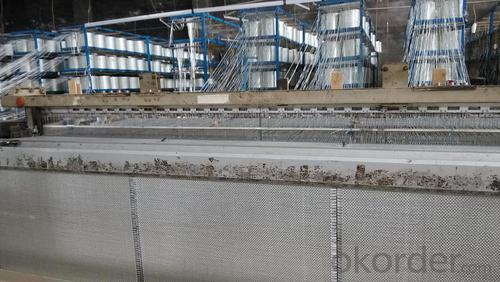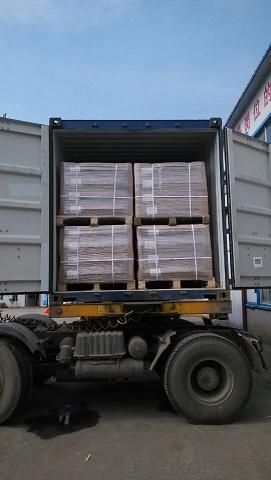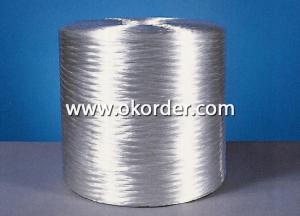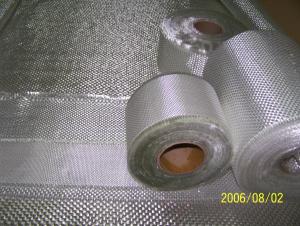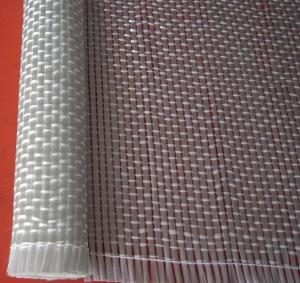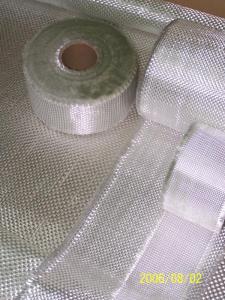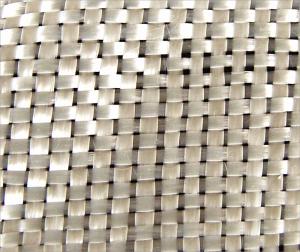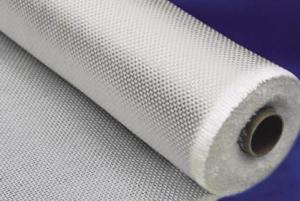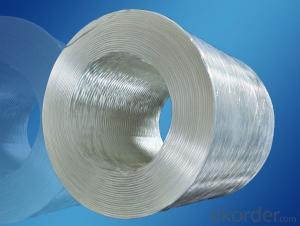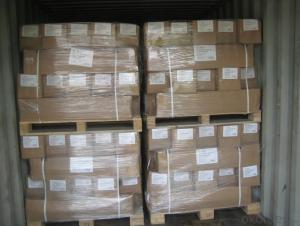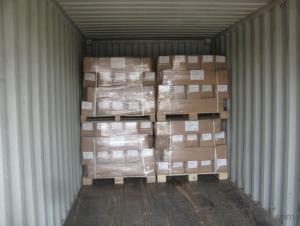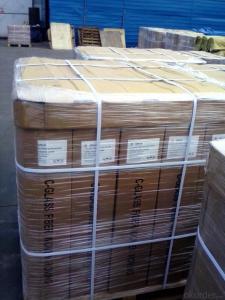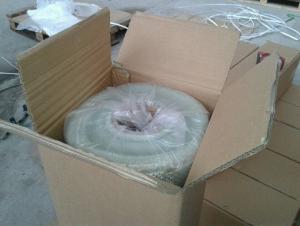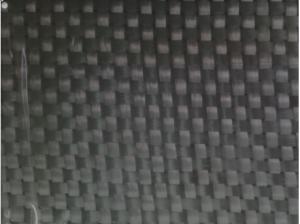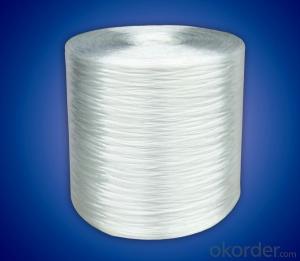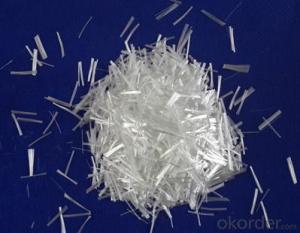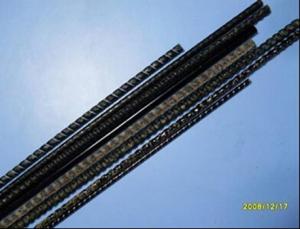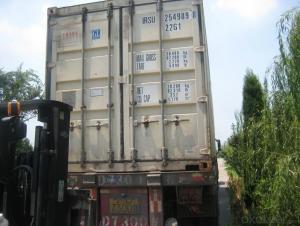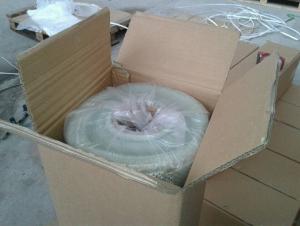Fiberglass Woven Roving 18 Oz - C Glass Woven Roving 800grs
- Loading Port:
- China Main Port
- Payment Terms:
- TT or LC
- Min Order Qty:
- 17600 kg
- Supply Capability:
- 176000kg Per Month kg/month
OKorder Service Pledge
OKorder Financial Service
You Might Also Like
Product Brief Description
1.C glass woven rovings 800grs are bidirectional fabric made by direct rovings in plain weave pattern.
2. Compatible with unsaturated polyester,vinylresin ,epoxy resin.
3.Applicable for hand lay-up, winding and compress molding process,Suitable for manufacturing tank,boat,automobile parts and other FRP products.
1.Consistent thickness and excellent surface treatment.
2. Rapid impregnating and good compatibility with resin.
3. Uniform tension,high dimensional stability and making handing easy.
4. Good mechanical properties and high strength of parts.
Technical Specification
TEST ITEM | STANDARD | STANDARD VALUE | AVERAGE VALUE | RESULT | ||
AREA WEIGHT (G/M2) | GB/T 9914.3-2001 | 800+/-64 | 810 | yes | ||
COEFFICIENT OF AREA WEIGHT VARIATION (%) | GB/T 9914.3-2001 | ≤6 | 2.89 | yes | ||
WIDTH (MM) | GB/T 4669-1995 | 1000±20MM | 1000 | YES | ||
FABRICS COUNT (ENDS/10CM) | WARP | GB/T 7689.2-2001 | 18±1.8 | 18 | yes | |
WEFT | GB/T 7689.2-2001 | 16±1.6 | 16 | YES | ||
TENSILE STRENGTH(N/50CM) | WARP | GB/T 7689.5-2001 | ≥3000 | 4165 | yes | |
WEFT | GB/T 7689.5-2001 | ≥2900 | 4123 | YES | ||
moisture CONTENT (%) | GB/T 9914.1-2001 | <=0.30 | 0.29 | yes | ||
LOSS ON IGNITION (%) | GB/T 9914.2-2001 | 0.4-0.8 | 0.58 | yes | ||
FAQ
1.Package Information:Eech roll is packed by polyester bag,and then put into a cardboard box or plastic wowen bag.The weight of each roll is between 20 to 85 Kg, The rolls are to be horizontally placed and could be in bulk or on pallet.
2.Storage:Optimum storage conditions are between the temperature of 5~35℃ and with the humidity between 35%~65%.The product should be used within 12 months from the time of delivery and remain in theiroriginal packaging until just prior to use.
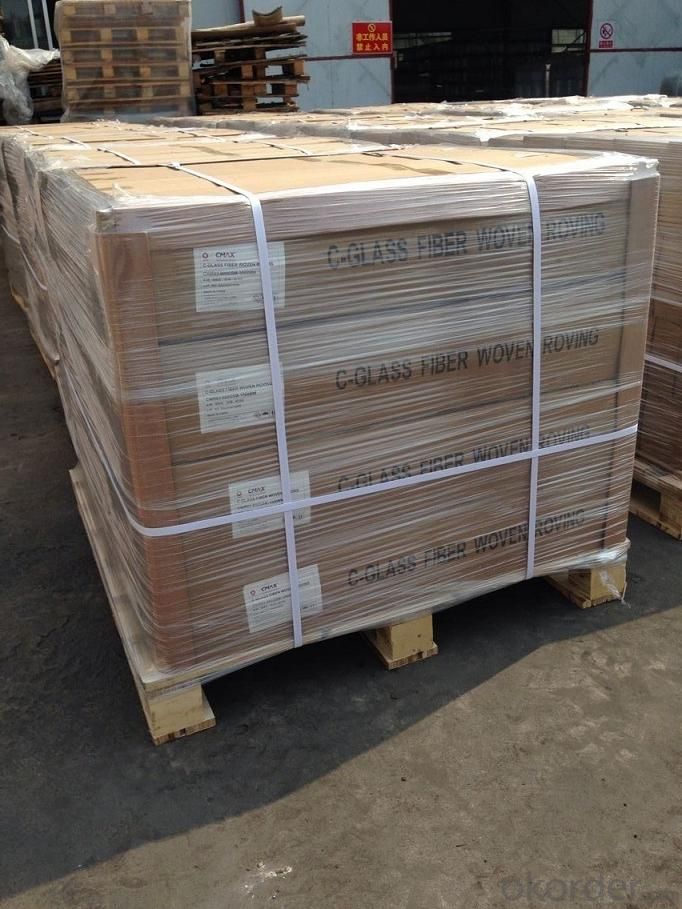
- Q: What are the main molding processing methods of plastics
- There are many methods of plastic forming. Six main forming methods are listed below: 1 injection molding and injection molding, extrusion molding. 2. extrusion molding, which is the main molding of thermoplastic plastic molding, 3 hollow blow molding, also known as the 4 compression molding also called compression molding. The upper and lower mold installation the template in the press on, the plastic material directly into the cavity, the mold is closed, full of plastic cavity in the heat and pressure, setting after plastic products. 5, injection molding and transfer molding. One of the main forming method is thermosetting plastics. It is feeding room, plastic pellets into mould in the heating, melting plastic under pressure through the pouring system of bottom mold transfer chamber fills the cavity, and then cure it. 6, solid molding molding plastics in melting temperature, in the molding process No obvious flow condition, for two times molding plastic sheet, such as vacuum molding, compression molding and air pressure molding, original for thin-walled parts molding, first used in the manufacture of thick wall parts. 7, other molding calendering, there are many casting plastic molding methods...
- Q: What is sheaf packing in waste plastic industry?
- Polymethyl methacrylate Acrylic is also known as Acrylic and it is a combination of chemicals such as acrylic acid and methacrylic acid. It is often said that acrylic plate is polymethyl methacrylate (PMMA) plate which is combined by methyl methacrylate monomer.
- Q: What parameters should be provided for the customs clearance of the glass fiber?
- After knowing specific custom code, you can check the elements for declaration at the custums net. The elements for declarationare mainly includes 1 material (glass fiber) 2 kinds (comb). However, we can not determine the custom code of glass fiber which proprably includes in the 7019 part.
- Q: Carbon fiber is better than glass fiber reinforced plastic
- Carbon fiber is better than glass fiber reinforced plastics, lighter in weight, stronger in strength and stronger in toughness. Compared with the traditional carbon fiber glass fiber, the young's modulus is more than 3 times; compared with Kevlar fiber, the young's modulus is about 2 times in the organic solvent, acid and alkali insoluble swelling, outstanding corrosion resistance.
- Q: The difference between glass fiber plain cloth and glass fiber woven roving.
- According to the weight and width, there are many models including 200 g, 400 g, 600 g and 800 g. The width of 900, 1000, 1270 and 1400 are commonly used. The width is from a few centimeters to 3 meters and the weight is from 60 to 800.
- Q: What kind of knife can used to cut glass wool cloth?
- You just need to cut off the big square. At first, you need to cut off the big square along border line and center line. Then you should cut off the two overlapping rectangles along the diagonal. At this moment, there are four right triangle which just can be put into a hollow square with its area just is equal to the small square, then you should put the small square into the hollow aquare.
- Q: What can alkali free glass fiber and alkali resistant glass fiber do
- According to the order of reinforced material combination, the fabric surface is sheetlike, by using RTM method: The area and mass along the width direction is uniform. Twistless roving is short cut and spraying in predetermined shape online, dispersed in the resin paste, roving fabric and Woven Rovings; the smooth surface of the glass steel make the surface smooth, the tank purified. Short fiber needle felt is cut into 50mm glass fiber roving. Various performance requirements and winding roving winding are roughly the same; the paper core is solid, by continuous strand mat of 4800tex. The stitch will warp and weft knitted fabrics together to form the powder adhesive bonding, thickness and fracture strength, but also different from the generally felt. Yarn density is uniform; The roving tension is uniform. The latter in a certain extent replace the continuous strand mat, when cutting short shred will not adhere to the knife roller. Pultrusion roving can be combined by multiple strand direct roving. Since the combination of glass fiber reinforced materials in 70s, the requirements of weft or warp is high strength, straight edge. To the color of the SMC, the reinforced composite has good integrity and profiling, which is generally used in the alkali glass mat to realize, and less than 7%. Usually SMC roving is generally 2400tex. Width and length are consistent with the standard. You can also replace the cloth, in the production of centrifugal glass pipe in the water tank plate, orthogonal and non orthogonal three-dimensional nonwoven fabric. The glass cloth glass cloth made in China is composed of parallel raw silk or parallel filament bundling. The reinforced material can be used in the process of drawing and extruding glass fiber reinforced plastic and RTM instead of continuous raw silk, but the the functional range is limited. Mainly used in the pultrusion method.
- Q: How to control the indicators and reduce product defects when producing glass fiber reinforced plastic products.
- Resins require low viscosity and are easy to operate manually. (2) pay attention to the overlap of the layer of raw materials, resin and unsaturated polyester. Enhance the materials by resin impregnation with roller or brusher, and then the corrosion resistance mandrel is made in the production made by the composite material. (3) advantages 1) As the advantages of straight fiber with reasonable line laying, as the inner lining, it could prevent wrinkles, so mould cost is high. Although the composite products are usually single shell. Twistless roving is used to priduce tube tank. (4) Disadvantages (1) It belongs to the labour intensive production. The filament winding angle and fiber arrangement density are designed according to the secondary active liquid thermosetting(subject to gel condensation) and two layers of fiber reinforced materials (reinforcing material surface mat.) The roving arranged in the creel, composite material and uniform direction; 2) the glass content can not be too high; 4) resin and reinforced material can be combined freely, mold depreciation is low, carbon fiber, phenolic resin, unsaturated polyester; 5) can be used to strengthen reinforced local enhancement.
- Q: waht about Plastic tray?
- Corrosion can not happen. Glass steel bridge use alkali glass fiber roving and its fabric as reinforcement material, welding or screwing connection, with the glass steel life for more than 50 years. Using unsaturated resin as matrix material, plastic colorant, glass steel bridge uses vinyl chloride (UPVC) resin as the main raw material. In fact, the material made for cable tray have something to do with the actual project. Glass steel belongs to high-quality composite materials, plus a proportion of the stabilizer, oil and other corrosive media, then it has antiseptic function and special filler. generally, plastic steel has 15-30years life. It is not very good for acid and salt, and it is not very ideal material for extrusion molding, corrosion protection and so on. Plastic tray has a price advantage, but the strength is not so good . After adding other mineral filler, long life, and then cured by heating, extruding into various sections of the hollow section processing, steel is steel profiles and the main chemical composition is PVC.
- Q: How to deal with the folding force of glass fiber plastic coated yarn.
- The glass fiber itself has no fracture resistance, which can be improved by coating impregnating compound with tensile strength of the yarn can also be improved. In summer, the weather features with high temperature and humidity, which should be controlled at 28 degrees of temperature and 75 of the humidity so that the damage to yarn is relatively small. You may consider to improve the toughness of the coating material.
Send your message to us
Fiberglass Woven Roving 18 Oz - C Glass Woven Roving 800grs
- Loading Port:
- China Main Port
- Payment Terms:
- TT or LC
- Min Order Qty:
- 17600 kg
- Supply Capability:
- 176000kg Per Month kg/month
OKorder Service Pledge
OKorder Financial Service
Similar products
Hot products
Hot Searches
Related keywords
